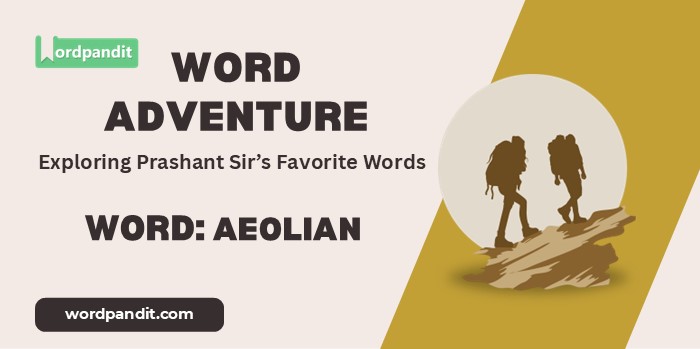Word Adventure: Aeolian
The Headline
“Aeolian: Where Wind Shapes Earth and Sound”
The Scoop
In the vocabulary of natural phenomena, some words carry the weight of ancient mythology while precisely describing modern scientific concepts. ‘Aeolian’ is one such term – a word that bridges the gap between classical mythology and contemporary geology, music, and environmental science. Join me as we explore this versatile term that captures the wind’s creative force.
Let’s Break It Down
The Plot Thickens
The story of ‘aeolian’ begins in ancient Greek mythology with Aeolus, the divine keeper of the winds. According to legend, he kept the winds in bags on his floating island, releasing them at the gods’ command. This mythological connection gives the word a poetic quality that persists even in its scientific applications.
In geology, ‘aeolian’ processes shape our planet’s surface. Wind erodes rocks, transports sand, and creates spectacular formations like sand dunes and wind-carved rocks. These aeolian landscapes tell stories of ancient winds and changing climates.
The term also found its way into music through the aeolian harp, an instrument played by the wind itself. These simple string instruments, popular in the Romantic era, produce haunting harmonies as breezes pass through them, creating what some called “the music of the spheres.”
Word in the Wild
The Twist
Here’s a fascinating aspect of aeolian processes: they’re not unique to Earth! Scientists have discovered aeolian features on Mars, Venus, and even Saturn’s moon Titan. These alien landscapes, shaped by winds in different atmospheric conditions, help us understand both the history of these worlds and the universal nature of aeolian processes.
Make It Stick
Aeolian: Where wind becomes sculptor, musician, and ancient storyteller!
Your Turn
Think about the aeolian features in your environment. Have you noticed wind-shaped rocks, sand patterns, or heard the natural music of wind through trees? Share your observations of wind’s artistic touch in the comments below. Let’s explore how these aeolian phenomena shape our world!
Down the Rabbit Hole
- Curious about geological formations? Research aeolian landforms like yardangs, ventifacts, and loess deposits.
- Interested in wind-powered music? Explore the history of aeolian harps and other wind-activated instruments.
- Want to learn about extraterrestrial winds? Investigate aeolian processes on Mars and other planetary bodies.
The Last Word
As we conclude our exploration of ‘aeolian’, I hope you’ve gained an appreciation for this word that celebrates wind’s creative force. It reminds us that the air moving around us isn’t just empty space – it’s a sculptor of landscapes, a maker of music, and a carrier of stories. The next time you feel a breeze, remember – you’re experiencing the same force that shapes our world through aeolian processes! Until our next word adventure, this is Prashant from Wordpandit, encouraging you to listen to the wind’s ancient tales!












